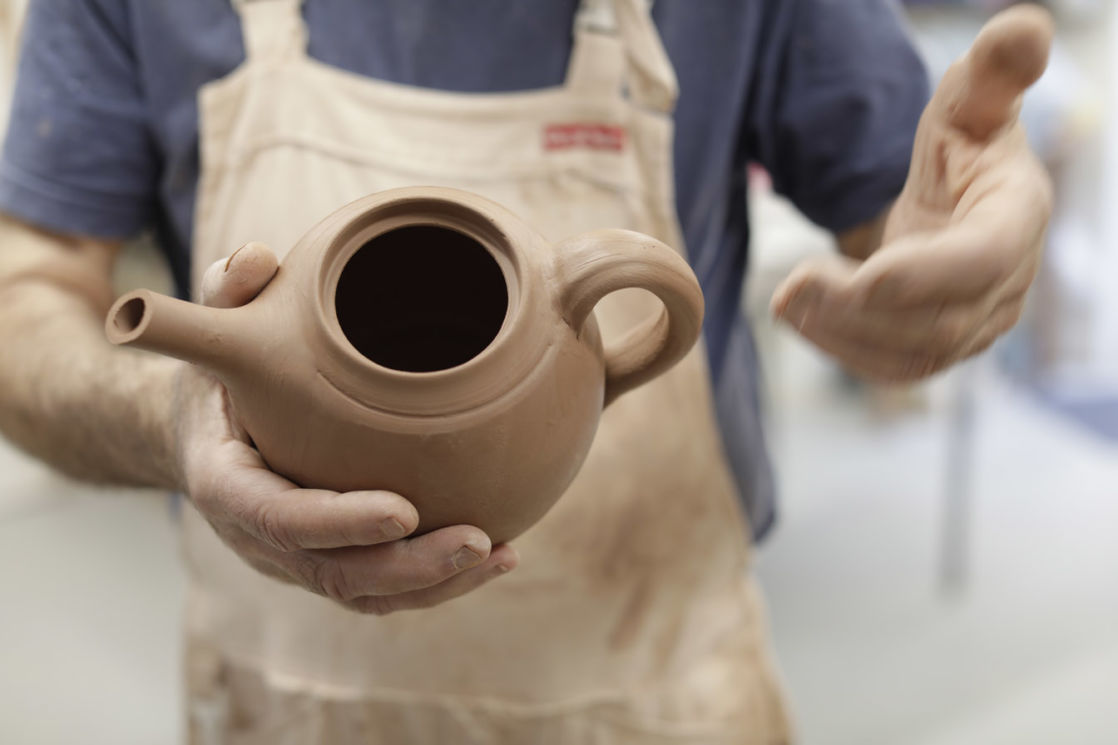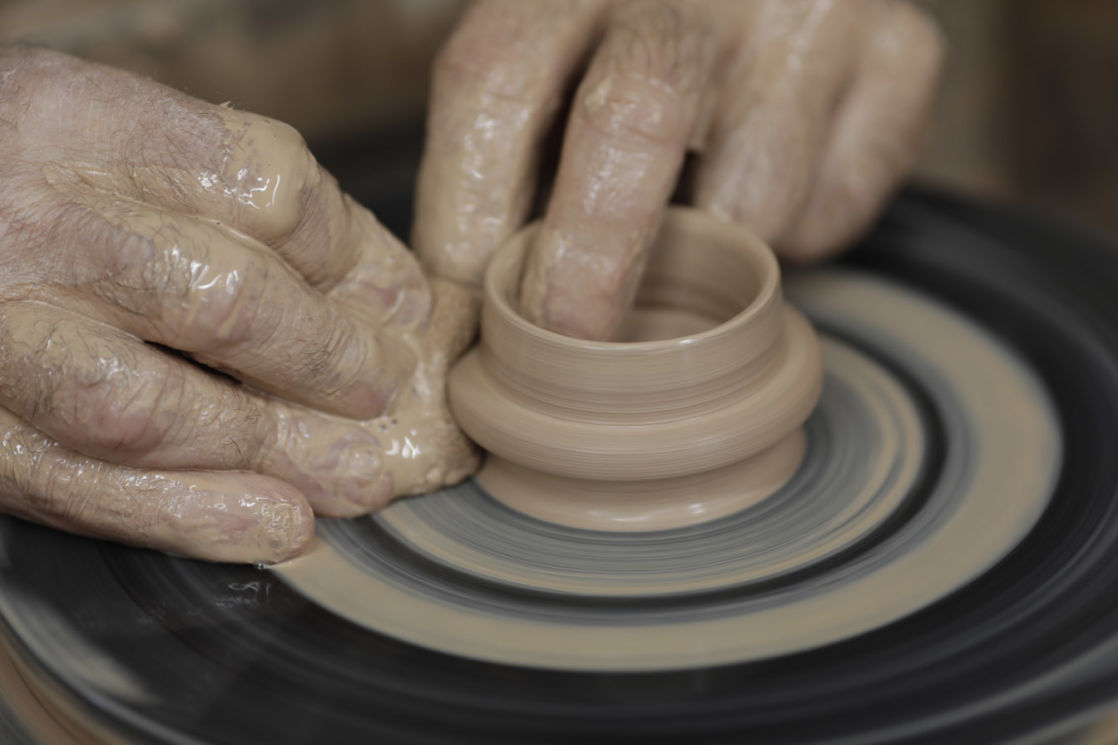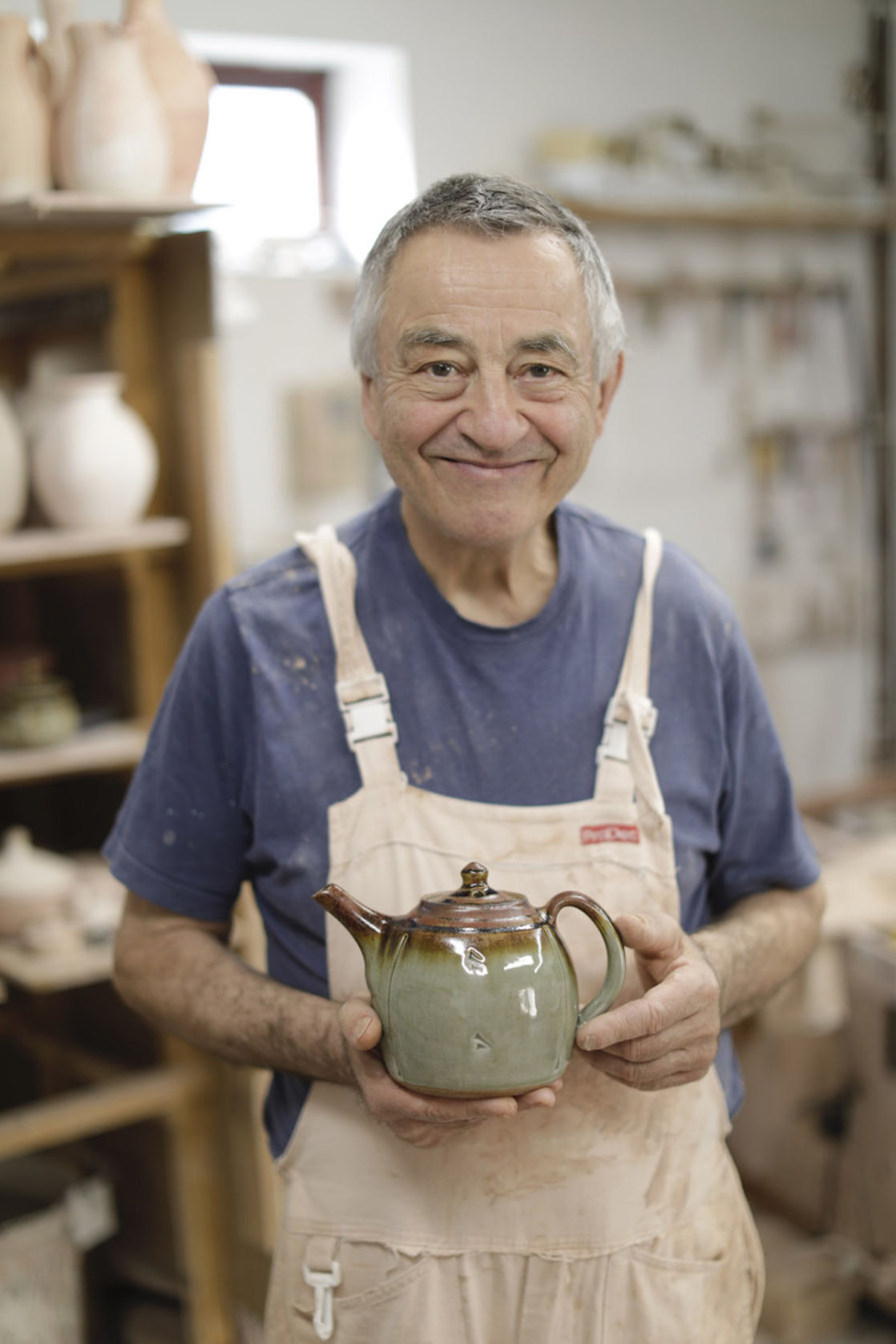Welcome to Ceramic Review
Ceramic Review is the magazine for contemporary and historical ceramics, ceramic art and pottery.
Ceramic Review Issue 328
July/August 2024
Ceramic Review is the magazine for contemporary and historical ceramics, ceramic art and pottery.
July/August 2024
Made in four separate parts, potter John Jelfs takes us step-by-step through the processes he uses to create a complete functional teapot
I came to pottery quite late having studied marine engineering for seven years, the last two of which were at sea. I love the sea and engineering, but it was not the career for me, so I went back to college to undertake a Foundation course at Gloucestershire College of Art in Cheltenham. This is where I discovered clay and was taught by James Campbell, a fluent handbuilder, and Tony Davis, a good repetition thrower. I was then accepted on the Ceramics degree course at Bath, but I felt I had been a student long enough.A few days before the start of term I took some pots to Ray Finch at Winchcombe Pottery. That very morning Ray had been contacted by Russell Collins who was looking for a production thrower to look after his pottery while he taught at Harrow (Art School). Ray recommended me to Russell and I started at Hook Norton Pottery in Oxfordshire the following Monday. I can well remember being paid to do something I loved for the first time.

Teapots by John Jelfs | Photo by Layton Thompson

John Jelfs throwing | Photo by Layton Thompson
Russell was a great teacher and always encouraging, however, the 70-mile round trip across the Cotswolds on my motorbike became too challenging. I was married by this point, and my wife Jude and I started looking for a workshop of our own. We found an old shack to rent in Bourton-on-the-Water, borrowed a kick wheel and some clay from Russell, found an old kiln on a rubbish tip, and we were off. Failure was not an option and the rest is now history. We made earthenware – tin glaze and slipware – for about three years before building a large oil-fired kiln for stoneware in 1976. In those early days, Ray, Sid Tustin (from Winchcombe) and Russell were always encouraging, as were the outlets we supplied, including Peter Dingley, David Cantor, Pam Henry and others.I have always made a range of domestic ware alongside my one-off studio pots. Making teapots is a challenge I have always enjoyed. Teapots should, I feel, be a joy to use.
On the practical side, I use a blend of West Country clays mixed in an old bakers’ dough mixer, pugged and left for several months. My ash glaze celadons and high iron slips both use a local black clay from the banks of the River Windrush, which flows through our Cotswold village. I started soda-firing 20 years ago and this forms an important part of my output of individual pieces. My influences include Bernard Leach, Hamada (whose work I first saw in the late 1960s in the V&A) as well as Hans Coper and the sculptors Alexander Calder and Barbara Hepworth. I do not consider myself to be a total Leachite! I served on the Craft Potters Association Council for seven years in the 1990s, and along with John Wheeldon, started the Oxford Ceramics Fair, which Jude and I organised together for more than 20 years.
For more details on John and his work visit: cotswoldpottery.com
Subscribe to read this article in issue Ceramic Review Issue 306 (November/December 2020).

John Jelfs | Photo by Layton Thompson